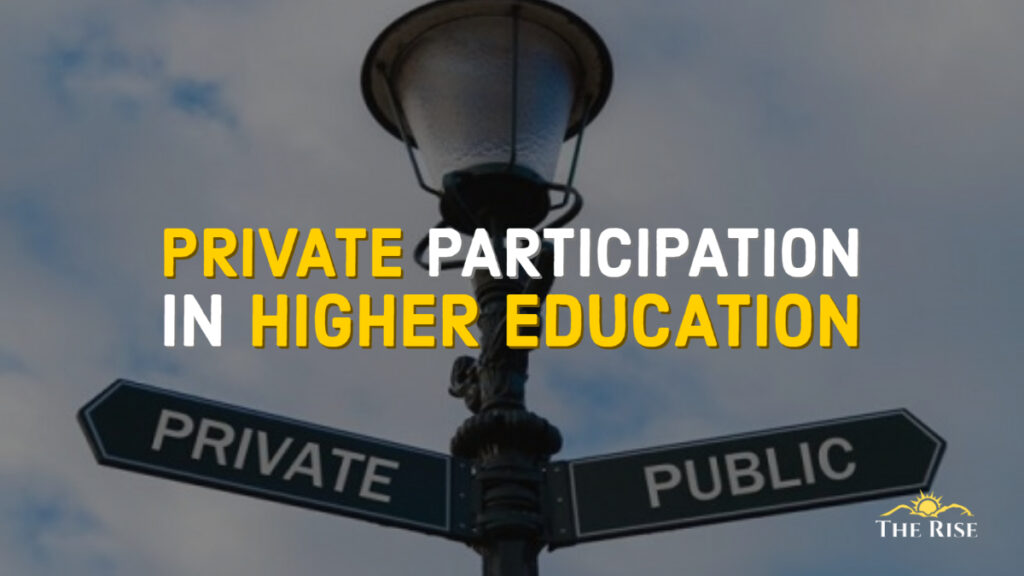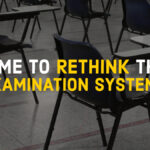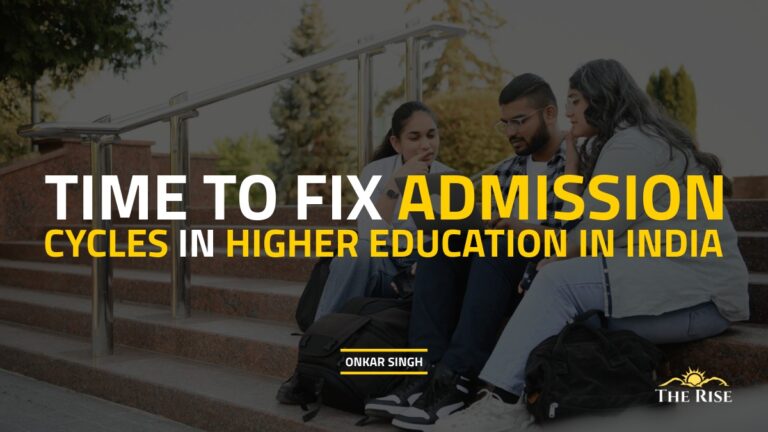NEP 2020 regards private participation in higher education as imminent but admits that it may not be sufficient for promoting Access, Equity and Quality in higher education.
There was once a time that all sectors of education, including all kinds of higher education – general, professional and technical higher education were considered a public good, if not a merit good, making it incumbent upon the state to provide for and fund higher education. Why else did the government in the post-Independence period start providing grants-in-aid to even private colleges? So long as it was considered a public responsibility, the higher educational institutions were either established and funded by the government or if established by the private philanthropic initiatives, they were supported by public funding in the form of grants-in-aid.
Following the National Policy on Education 1986 and the Programme of Action document of 1992, higher education was increasingly seen as a private good, first hesitantly, then tangentially, and now unabashedly. It is assumed that those aspiring to get higher education, must be willing to pay for it, through their noses if they want perceivably good quality professional or technical higher education.
This created conducive conditions for the rapid rise in the private higher educational institutions of many hues. The idea prompted private tendencies in the public higher education institutions compelling them to look for alternative sources of fundings and moving towards full-cost recovery in a gradual but planned manner leading to a sustained decline in public funding for higher education.
Also Read: Self-Financed Private Universities: Implications on Affordable Quality Higher Education
Rapid rise in private higher educational institutions has led to massive underinvestment in public higher educational institutions.
Consequently, the growth in the government and government-aided higher education institutions was stunted as compared to the speed at which they were growing since Independence. At the same time, the rapid rise in the private higher educational institutions has led to massive underinvestment in public higher educational institutions rendering them marginalised in terms of numbers as well as enrolment. Despite these developments, the public sector in higher education is considered critical for nation-building.
NEP 2020 promotes private higher education as no education policy did before. Even when it argues for “substantial investment in the strong, vibrant public education system”, it makes sure to suggest that the policy shall “encourage and facilitate true philanthropic private participation” in higher education. It seeks to give a big push to promote ‘private institutions (albeit) with a ‘public-spirited commitment to high-quality equitable education’. At the same time though, it is quick enough to add “alongside the model public universities for holistic and multidisciplinary education, at par with IITs, IIMs etc. to attain the highest global standards in quality education”.
Also Read: Anniversary of NEP 2020: Education needs intensive care
Guided by the grouse of the private sector that they feel discriminated by the regulatory and funding agencies, the policy asserts that “all higher educational institutions, public and private, shall be treated on par” for the regulatory purposes. Additionally, the regulators “shall encourage private philanthropic efforts in education”. For this purpose, the policy urges that private higher education institutions should be subjected to the same norms and standards as are applicable to public higher educational institutions. The policy also seems to favour a common legislative framework for all higher educational institutions.
NEP reiterates that no distinction shall be made between public and private higher educational institutions.
The idea of encouraging private participation in higher education and treating them at par with the public ones recurs repeatedly throughout the policy document. In the context of ‘devolution of responsibility and accountability’ to the ‘higher educational institutions concomitantly’, the policy reiterates once again that “no distinction shall be made between public and private higher educational institutions”.
To ease the entry and operation of the private sector, the policy assures that “setting up new quality higher education institution will also be made easier by the regulatory regime while ensuring with great effectiveness that these are set up with the spirit of public service and with due financial backing for long-term stability”. The idea reappears again as the policy prescribes piloting the “public philanthropic partnership models for higher education … with the aim to further expand access to high-quality higher education”.
Also Read: National Education Policy 2020: Issues and Implications
The policy is conscious of the challenges that the private sector poses, including but not limited to the affordability barriers in accessing higher education. Accordingly, it mandates that ‘increased access, equity and inclusion’ shall be addressed through “scholarships by the private/philanthropic universities for the disadvantaged and underprivileged students”. This is repeated again, though with a substantial dilution of the idea, that the “private higher educational institutions will be encouraged to offer a large number of freeships and scholarships to their students”.
Though there is no clue as to who shall encourage them and how, the policy seems to be aware of the fact that the private sector may falter in this responsibility. The onus is passed on to the governments to provide “more financial assistance and scholarships to Socially and Economically Deprived Groups (SEDGs) in both public and private higher educational institutions”. The NEP, thus, provides a policy backing to public funding of private higher educational institutions. This is further reinforced in the context of the creation of the National Research Foundation (NRF) which shall finance research in priority areas to both public as well private higher education.
Also Read: Scrutinizing the appointment of Vice-Chancellors
The policy also formalises the private practices and tendencies amongst the public higher education institutions as it empowers and encourages public higher education institutions to determine their level of fees and other user charges in a gradual but systematic manner.
Presuming that the absence of regional languages and mother tongues as mediums of instruction causes inequity, the policy feels that in order to ensure full access, equity and inclusion, the nation must ‘develop high quality higher education institutions, both public and private, for teaching in local/Indian languages or bilingually’. Yet at another place, it further emphasises the point by stating that “private higher educational institutions too will be encouraged and incentivised to use Indian languages as medium of institutions and/or offer bilingual programmes“.
Since such a practice already prevailed across the country as far as the general higher education is concerned, particularly in disciplines like humanities, languages, social sciences and teacher training, the recommendation was interpreted as the introduction of regional languages in the professional and technical higher education as well and is therefore being implemented accordingly.
Also Read: How Feasible is Imparting Engineering Education in Vernacular Languages?
All India Council for Technical Education (AICTE) has already come up with an AI-enabled tool to translate scientific and technological works into national and regional languages. There is, however, no discussion as to how would this policy play out in the job market? Will job opportunities for such candidates become confined to a limited geography, thus causing another kind of inequity and exclusion?
The policy seeks to “empower private higher educational institutions to set fees for their programmes independently, though within the laid out norms and the broad applicable regulatory mechanism” assuming that the tendencies for crass commercialisation and exploration of students shall be effectively dealt by a “light but tight regulatory approach”, whatever does it mean. Further ahead in the policy document, it seems that by this they mean a regulation based on full public disclosure of finance, procedure, course, programme offerings and educational outcome which would enable students and their parents to make informed choices.
Also Read: Excess Impedes Excellence: Empirical Evidence for Regulation in Higher Education
Further, it restricts the “progressive regime for fee determination” to only such “private higher educational institutions (that are established and run) with philanthropic (motives) and public-spirited intent”. The policy hardly offers any clue as to how shall these be determined. Going by the prevalent law, all higher educational institutions are to be run on a not-for-profit basis and are essentially philanthropic in character, at least de jure.
The policy believes that “fees and charges set by private higher educational institutions shall be transparently decided and fully disclosed”, and hopes that “the fee determining mechanism will ensure reasonable recovery of cost while ensuring that higher educational institutions discharge their social obligation” and that the self-disclosure shall deter crass commercialisation and exploitation.
The policy also formalises the private practices and tendencies amongst the public higher education institutions as it empowers and encourages public higher education institutions to determine their level of fees and other user charges in a gradual but systematic manner. Further, it “calls for rejuvenation, active promotion and support for private philanthropic activity in the education sector” and indicates that “any public institution can take initiatives towards raising private philanthropic funds to enhance educational experiences”.
Also Read: Quality Education: A Luxury or A Fundamental Right?
Education is a public service and access to quality education must be considered a basic right of every child.
Pinning such a high hope on private higher education, however, may not work to the desired effect. Even the NEP 2020, which proactively promotes private participation in higher education, feels compelled to admit that “education is a public service and access to quality education must be considered a basic right of every child” and stresses on “substantial investment in a strong, vibrant public education system”.
Accordingly, the policy proposes ‘a substantial increase in public investment in education both by the centre and the state to be able “to attain the goal of education with excellence and the corresponding multitude of benefits to this Nation and its economy”.
Also Read: Equitable and Accessible Education in COVID-hit India: A Mirage?
The policy reiterates that “the Centre and State will work together to increase the public investment in education sector to reach 6 per cent of GDP at the earliest” and considers this extremely critical for achieving the high quality and equitable public education system that is truly needed for India’s future economic, social, cultural, intellectual and technological progress and growth.
It is reassuring that NEP 2020 recognises “the public education system as the foundation of a vibrant democratic society, and the way it is run must be transformed and invigorated in order to achieve the highest levels of educational outcomes for the nation”. The policy also argues for “increased access, equity, and inclusion through a range of measures, including greater opportunities for outstanding public education”. It is now time to walk the talk.
Disclaimer: The views expressed in this article are of the author solely. TheRise.co.in neither endorses nor is responsible for them.
About the author
Dr. Furqan Qamar is a former professor of management at Jamia Millia Islamia and an education advisor in the Planning Commission, now NITI Aayog, is currently the Chief Advisor to the Chancellor at Integral University, Lucknow. He has been the former Vice-Chancellor of the University of Rajasthan and Central University of Himachal Pradesh and Secretary General of Association of Indian Universities..











Very well analyzed. The private sector institutions being self financed have to earn while in service as compared to public sector institutions which operate solely on service motive. A serious thinking is required to finance the public sector education amply so that country can boast of some world class institutions with excellence in education. Increasing public spending on higher education is primary requirement
Pingback: Higher Education in Public & Private Sector - TheRise.co.in
Pingback: Motivation for Higher Education - TheRise.co.in